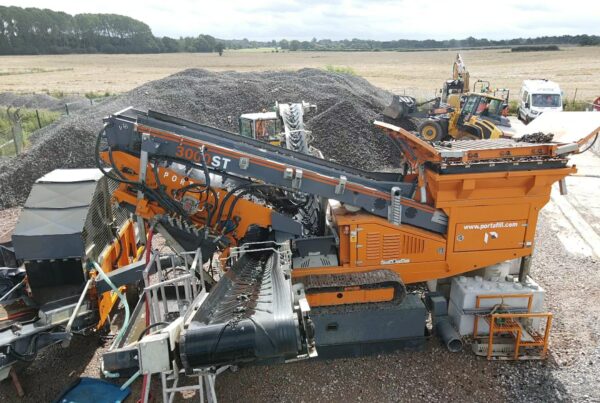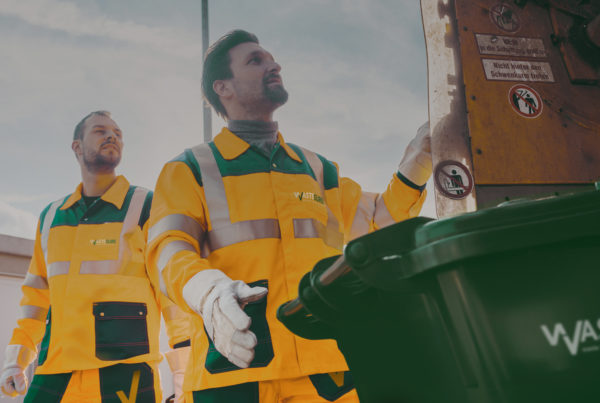When you are planning to move or dispose of any waste type, it is a part of your duty of care to make sure that everyone involved with the transfer and disposal has the correct environmental permit types. Following the permits is the only way to show that you have fulfilled your duty of care. You must get this right to avoid potential prosecution.
The purpose of the environmental permit is to ensure that the activities conducted by the company don’t impact on the environment in any way. As it says in the Environmental Permitting Guidance, Core Guidance For the Environmental Permitting (England and Wales) Regulations 2010:
“In practice, this means that the regulator will ensure, where a permit is granted, that permit conditions achieve the objectives and intended outcomes of any of the directives or national policy which apply.”
While government legislation for waste and waste products has become a tangle of laws and obligations that are almost impossible to follow, the most important information you need is this: without the relevant permit, you can’t do anything with your waste. To even think about moving your waste, you first need to fill out a waste transfer note.
What is a Waste Transfer Note?
A waste transfer note is required every time you plan to move waste. The note contains all the information every party involved needs to safely handle and move the waste.
This information includes:
- What the waste is including the LoW Code and description
- The quantity of the waste
- Who produced the waste
- Who the waste carrier is
- Where the waste is going
There are two permits required on your waste transfer note.
The first permit is the environmental permit or waste management licence. This permit is for the person or company who is accepting your waste for disposal. For example, a recycling centre or a farmer. Your waste transfer note must include the permit/ licence number and who issued the licence (usually the EA).
The second permit is the registered waste carrier. This is the person or company who will be transporting your waste to the disposal site. The registration number and issuer must be included (again, most likely to be the EA).
WasteSURE provides auto-generated waste transfer notes that are completed as soon as the appropriate waste route has been identified, with links to all the relevant permits and documents. This means that every waste route is guaranteed to be compliant as soon as the waste transfer note is completed, checked and verified. There is no 30-day wait, no way to lose the digital document and no chance of getting this wrong.
What do you need waste permits for?
Waste permits are the documents that allow companies and individuals to carry and accept certain waste types within the Waste Duty of Care. Companies treating waste also need to have the correct permits. It is the waste producer’s Duty of Care to ensure that every company down the waste line is correctly permitted before the waste moves.
To carry or accept a particular waste type, the permit must include the relevant LoW code. Without that code, the individual or company can’t have anything to do with the waste type. Even if a company has a waste permit for other types of waste, they still can’t carry or accept waste codes they are not permitted for.
Waste permits also allow companies to store waste in a particular place temporarily. Again, this depends on the type of waste it is. For example, you could apply for a permit for a separate site to use as a base for a large scale building project or for a site that is difficult to access. By holding the waste in a separate location temporarily, you will be able to clear the waste much faster and the main site won’t end up backlogged with waste. In the case of limited access sites, a second site will allow you to use smaller trucks part of the way and then larger trucks from then on, cutting down the number of movements required and bringing down the overall cost.
Many waste permits are general and allow companies to carry and accept a variety of waste types. However, there are some more specific permits, especially where the waste type is hazardous and requires particular care. There is only one standard permit which includes hazardous and non-hazardous waste from households. If you aren’t sure whether you need a permit or not, or whether your permit covers the waste materials you want to handle, you should always check with the Environment Agency before you do anything with the waste.
At WasteSURE, we guarantee that all the waste carriers, treatment centres and disposal centres have the correct permits or exemptions before your waste is moved. We check all our providers permits and with our system, it is impossible to get the wrong permit.
What sort of permits are there?
There are 4 ways to meet the permit requirements set out by the Environment Agency:
Regulatory Position Statement
The Environmental Agency uses a position statement to express their position on low risk materials including movements, treatments, use and disposal. Position statements are used when no particular exemption or permit is required and sets out how a low risk material may be used.
If your activity falls under the description of a regulatory position statement, the Environment Agency does not currently require a permit for that activity.
You can find a list of position statements here.
Exemptions
A waste exemption is a useful permit type which allows you to move and dispose of low risk waste types. Though you do not need a permit for the activity, but you must still register your exemption with the Environment Agency.
To register for a waste exemption your waste operation must:
- Meet all the limits and conditions of an exemption
- Not harm the environment or human health
Standard Rules Permit
The standard rules permit is a set of fixed rules for common activities. Each standard rules permit outlines the guidelines for handling and disposing of the particular waste type it refers to. When you apply for a standard permit, you must ensure that your operations are within the guidelines set down.
Each standard rules permit lists the LoW Codes that are accepted as well as a description of the material. The types of operations that are allowed are also listed with any set parameters that are applicable. Often these parameters set out the limits on emissions, noise and odour as well as any safe distances.
If your business doesn’t fit within the guidelines of a standard permit, you should instead apply for a bespoke permit.
A Bespoke Permit
If your business activity doesn’t fit with the conditions set out in a standard permit, or you can’t find the waste type you are dealing with, you should apply for a bespoke permit.
Before you apply for your bespoke permit, you must ensure that you meet all the legal operator and competency requirements, have a management system in place and a full understanding of technical guidance. You will also need a full risk assessment and to ensure that your facility can control and minimize emissions.
Bespoke permit application forms are quite long and complex so it is well worth getting help with your application from the Environment Agency. This service is included in the cost of your application so it really does make sense to ask for help as it may turn out that you do fit within a standard permit after all.
The Environment Agency also offers an enhanced pre-application advice service for a further fee which includes face to face meetings on subjects such as:
- Complex modelling
- Preparing risk assessments
- Parallel tracking complex permits with planning applications
- Specific substances assessments
- Monitoring requirements (including baseline)
The WasteSURE System
At WasteSURE, we use our network of providers around the UK to ensure that no matter what sort of waste you need to dispose of, we can ensure that your waste is always handled within the waste duty of care.
Our system is very simple and we use a failsafe method to match waste types with carriers and disposal centres. We follow the same process every time to ensure a perfect match:
Identify
First we will identify the waste type using a LoW code and waste description. This is the first section of your waste transfer note.
Quantify
The next step is to quantify the waste you need to remove. This might be in weight or it could be the number of bags you have. This is the second section of your waste transfer note.
Allocating Permits
Once we have the waste type and quantity, we will use this information to see which permit is required.
Cross Referencing with Our Network
When we know which permits are required, we search our network for the providers with the correct permit. The way that our system works means that we can only book in providers with the correct permit.
We can’t get this wrong.


